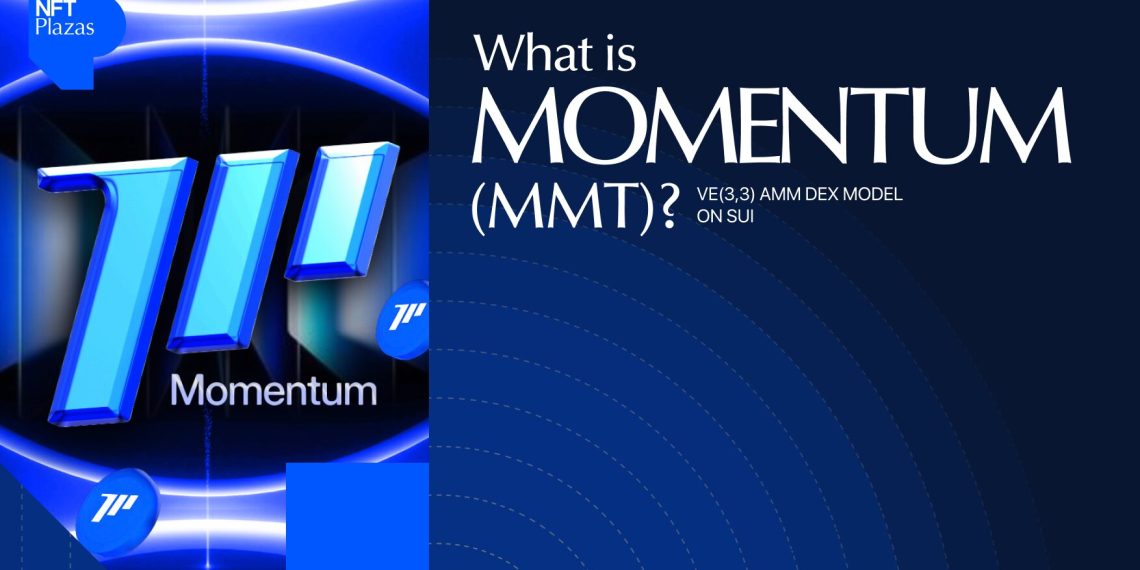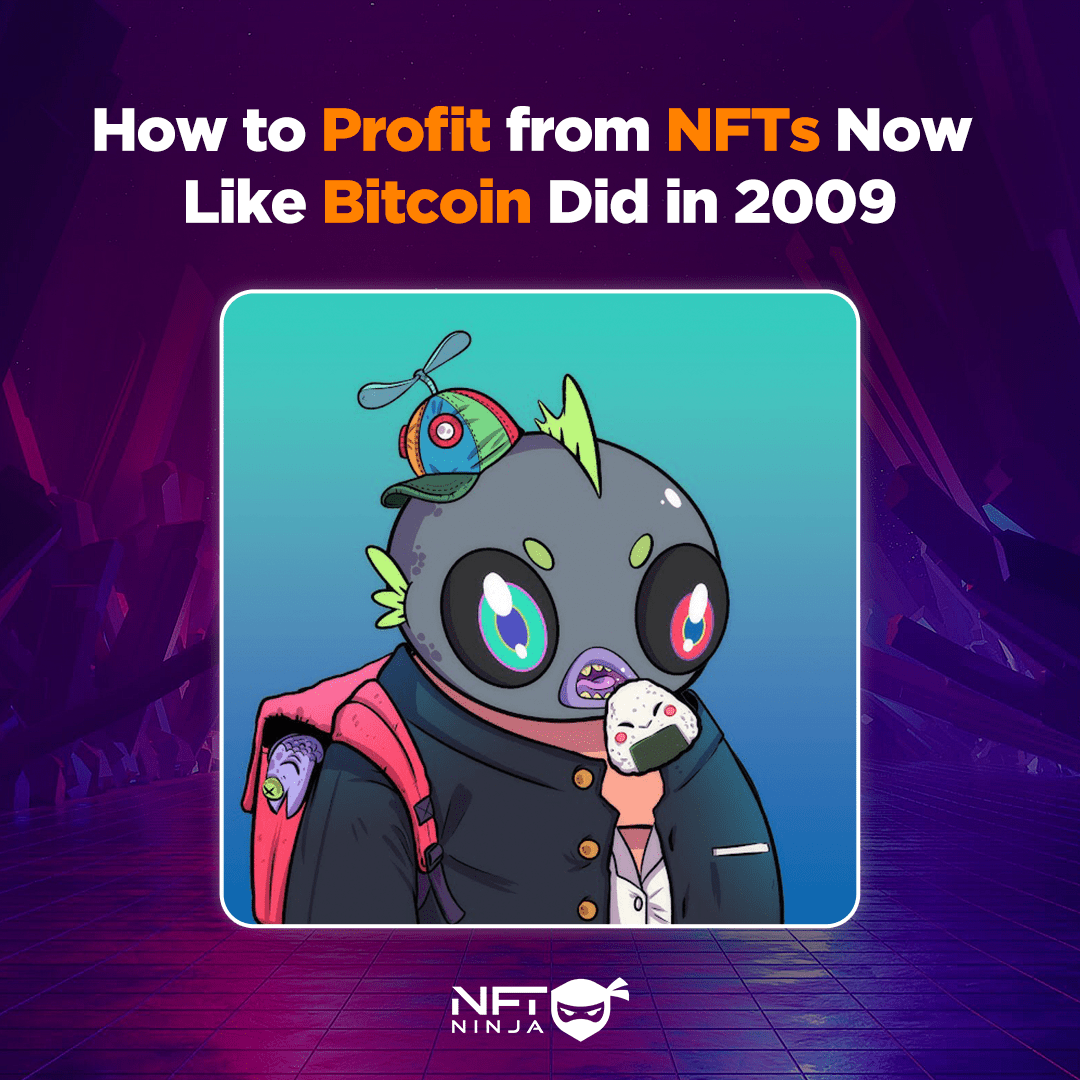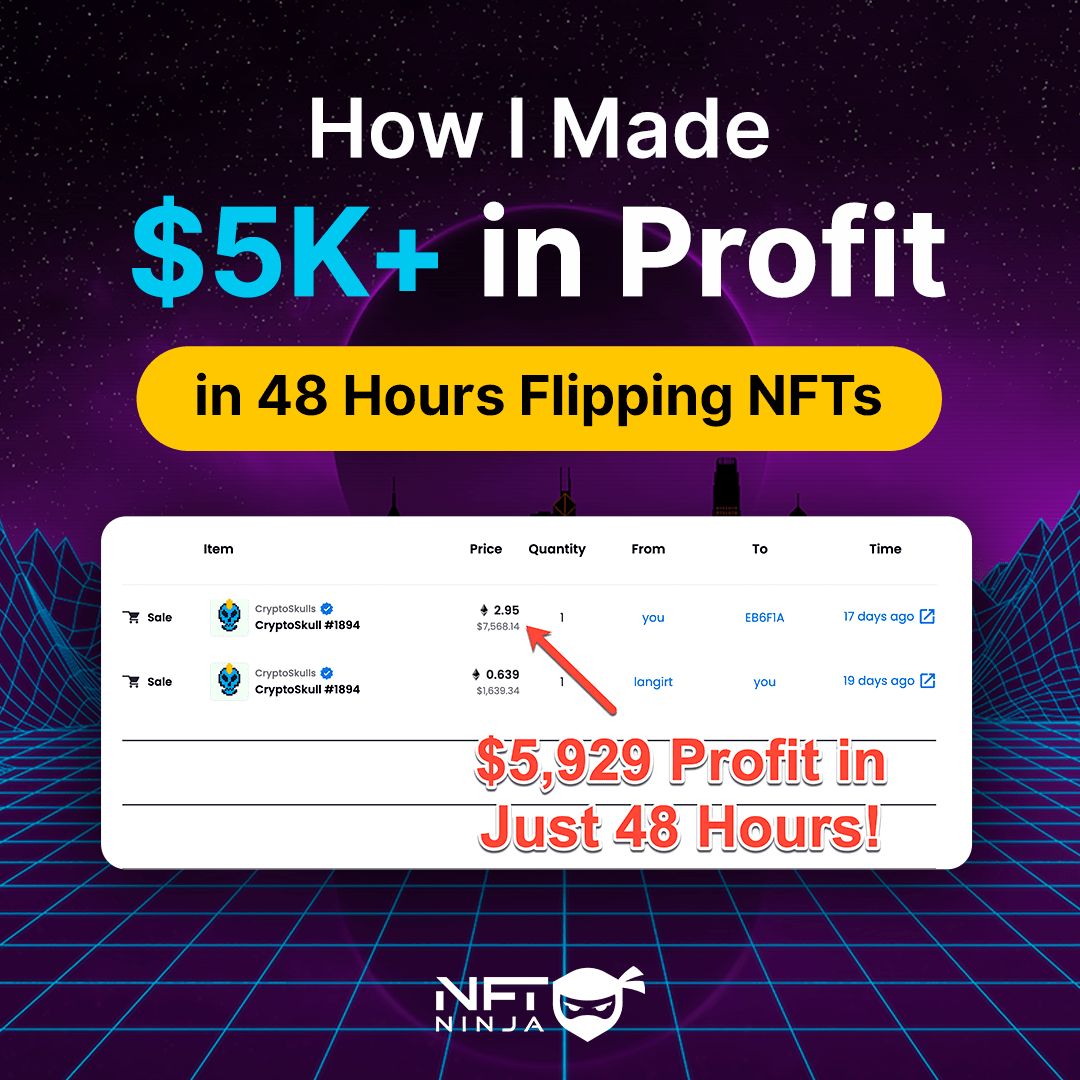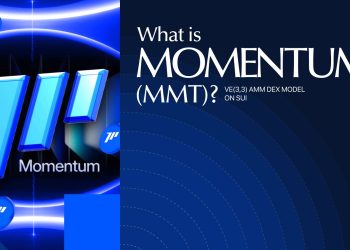Momentum is the operating system powering the next era of global finance. It is a foundational decentralized exchange (DEX), strategically built upon the high-performance Sui blockchain. Its design overcomes the speed and finality constraints of legacy DEX architectures by using Sui’s unique parallelism capabilities.
Momentum’s ultimate vision is to “Make all assets tradable, for everyone, everywhere”.
Learn more: Momentum (MMT) to Binance HODLer Airdrops
What is Momentum?
Momentum (MMT) stands as a non-custodial DEX protocol built on the robust security of the Sui blockchain. Its creation arose from a clear necessity: overcoming the structural rigidity and low throughput of first-generation DeFi exchanges.
Momentum Finance initially developed and operated as MSafe, a security-first multi-signature wallet and treasury management tool, before launching its comprehensive DeFi protocol. Its central philosophy centers on permissionless trading and radical capital efficiency for digital assets. The protocol’s ultimate goal is to facilitate a vibrant, global trading market on-chain, enabling users to swap virtually any Sui-native token, benefiting from near-instant finality and minimal gas fees.

Source: Momentum
This revolutionary Layer 1 exchange solution introduces object-centricity as its primary design paradigm. Rather than traditional account balances, Sui stores assets as independent objects. This approach enables parallel transaction execution for unrelated trades, meaning the network can process many swaps at once. Second, it completely walls off execution risk. A failure or malicious transaction concerning one asset object cannot, therefore, trigger a cascade across the entire protocol, protecting all other trading pairs.
Momentum Core Products
In addition, Momentum provides a comprehensive suite of products that extend beyond a traditional exchange model:
- Momentum DEX: This is the Central Liquidity Engine, which is also a Concentrated Liquidity Market Maker (CLMM) optimized for Sui’s high-throughput environment. It utilizes Sui’s Programmable Transaction Blocks (PTB) to bundle complex actions (e.g., swap → stake) into a single, atomic, and cheaper transaction.
- MSafe or theSecure Treasury Infrastructure. It is an institutional-grade multi-sig wallet solution for Move-based chains (Sui, Aptos, etc.), purpose-built for treasury management and token vesting.
- xSUI: This provides Capital-Efficient Liquid Staking. Users stake SUI and receive the liquid staking token xSUI, allowing them to earn native staking yield while simultaneously deploying xSUI across DeFi protocols to unlock additional yield.
- Token Generation Lab (TGL): A Bluechip Launchpad designed to support high-quality teams with strategic backing and deep liquidity. Notably, part of TGL’s fees are distributed back to active Momentum ecosystem participants, creating community alignment.
- Vaults: Offering Automated Yield, Made Simple. Vaults allow users to deposit assets and earn from automated, high-performance strategies (like auto-rebalancing and looping) managed by expert curators
- Momentum X: This is the Unified Trading Platform + Compliance Layer. Designed to integrate tokenized RWAs, it introduces a universal KYC/AML layer powered by the Sui technology stack, ensuring transfers and trades remain fully compliant on-chain.
How It Works
Momentum achieves its revolutionary flexibility and capital efficiency through three interconnected architectural innovations: the Object-Centric Model, Dynamic Pool Management, and the Hybrid ve(3,3) Incentive Layer. In detail, these components function together to create a cohesive, yet segmented, on-chain trading system in order to move the protocol beyond the structure of legacy Automated Market Makers (AMMs).

Source: Momentum
Learn more: Walrus (WAL) to Binance HODLer Airdrops
The Object-Centric Model
The Object-Centric Model represents the foundational infrastructure for creating decentralized trading markets. Sui’s architecture treats every token and every liquidity position as a distinct, programmable object.
- Object Ownership: Each liquidity pool, or Vault, exists as a unique, mutable object owned by the smart contract. A user’s deposited LP tokens are also separate objects, directly owned by the user’s address.
- Parallel Processing: Sui processes independent objects in parallel, avoiding the global consensus lock required by EVM chains. Momentum capitalizes on this by structuring its pools so that unrelated swaps do not contend for the same object lock.
- Risk Isolation: Each liquidity pool operates independently. A problem in one market, such as an exploit or price manipulation in a niche trading pair, cannot affect the funds locked in any other Vault object.
- Move Language Security: The core object model benefits from the Move programming language’s powerful type safety features. This ensures that assets can only transfer to their rightful owners, preventing common re-entrancy attacks and guaranteeing strong asset security.
The object model supports different classes of liquidity structures, providing builders with tools to meet various risk/reward appetites:
- Core Vaults (Constant Product): These vaults facilitate basic, governed trading products, ideal for passive liquidity providers who trust a DAO or risk manager to maintain stability and manage the risk settings.
- Edge Vaults (Concentrated Liquidity): These represent a free-market approach to capital efficiency. They operate with user-defined price ranges and allow users complete control over their risk exposure, perfectly suiting sophisticated, active traders.
- Escrow Vaults (Single-Asset Staking): These specific vaults hold deposits solely for staking and non-borrowable liquidity purposes, guaranteeing the liquidity is always available for instant execution.

Source: Momentum
Dynamic Pool Management and vMMT
While the Object-Centric Model provides speed, Dynamic Pool Management establishes sustained efficiency, preventing liquidity fragmentation. This management layer ensures the Momentum ecosystem operates as a single, cohesive marketplace.
The core function of Dynamic Pool Management involves enabling automatic liquidity rebalancing. On top of that, a user deposits Asset A and Asset B into a concentrated pool, and the system autonomously adjusts the capital’s price range. The protocol manages this rebalancing via a sophisticated algorithm based on the asset’s volatility and the current pool utilization rate.
Furthermore, the dynamic nature of the pools also offers advanced capabilities for high-frequency traders and developers:
- Liquidity Aggregation: Users can bundle multiple trades, such as swapping through three different pools (e.g., SUI to ETH to USDC), into a single transaction. This dramatically improves efficiency and reduces gas costs.
- Permissions Delegation: The management layer supports an operator concept, allowing users to delegate specific permissions to other smart contracts or operator wallets. This is essential for building sophisticated, automated trading and risk management strategies.
- Virtual Accounts: This feature enables users to create virtual, isolated accounts within the protocol’s core contract. Consequently, users can pursue different trading strategies simultaneously without affecting the health or collateral of their main position.
To manage the resulting positions from these complex strategies, Momentum uses an accounting system involving two custom token types: MMT-LPs and vMMT. In essence, these tokens represent a user’s position within the protocol and secure the governance structure.
- MMT-LPs (Liquidity Pool Tokens): When a user deposits assets into a liquidity pool, they receive a corresponding MMT-LP token. This token represents the user’s share of the total pool plus the trading fees they earn.
- vMMT (Voting Momentum Token): This is the core vote-escrow token, embodying the ve(3,3) mechanism. When a user stakes their native MMT governance token for a fixed lock-up period, the protocol issues vMMT. This vMMT represents the exact value of the staked MMT and grants voting rights. The duration of the lock-up determines the voting power; longer lock-ups earn more power.
Concentrated Liquidity and ve(3,3) Incentives
Momentum employs a Concentrated Liquidity Market Maker (CLMM) architecture, a design popularized by Uniswap V3 but optimized for Sui’s high-throughput environment. The model allows Liquidity Providers (LPs) to concentrate their capital within narrow price ranges where most trading occurs. Therefore, this vastly improves capital efficiency for LPs and ensures deeper liquidity and less slippage for traders.
Moreover, the entire system uses the ve(3,3) incentive layer, which aligns the interests of LPs, traders, and token holders. As a final step, the protocol automatically routes trades through the most efficient pool, guaranteeing the best possible execution price for the user.

Source: Momentum
In general, Momentum’s economic structure centers on the vMMT token and the ve(3,3) governance model (forked from Aerodrome). Ultimately, the central goal is to incentivize long-term protocol engagement and ownership.
Understanding ve(3,3) in Momentum
The ve(3,3) structure (often referred to as a “flywheel”) governs the distribution of newly minted MMT tokens (emissions) and trading fees. In short, it ensures capital remains deep and stable within the protocol.
- Vote-Escrow (ve): Users lock their MMT tokens for a set period (up to four years) to receive vMMT. A longer lock-up grants a higher amount of vMMT, giving more voting power. This mechanism removes MMT supply from the circulating market, directly supporting the token’s value.
- Gauges and Emission Direction: Each liquidity pool (gauge) receives a portion of the weekly MMT emissions. vMMT holders vote weekly to direct these emissions towards the pools they choose. A pool that receives more votes subsequently receives more MMT, which increases its Annual Percentage Rate (APR) for liquidity providers.
Fee Distribution and Bribes
In a critical mechanism that reinforces long-term holding, Momentum returns 100% of all trading fees generated by the Momentum DEX directly to vMMT holders. This immediate value transfer rewards long-term token lock-up.
The Move Language Foundation
The entire Momentum protocol utilizes Move, the resource-oriented language developed by Meta (formerly Facebook). This architectural choice directly enhances security and reliability across the platform.
- Resource Safety: Move treats digital assets as “resources” that cannot be copied, implicitly lost, or re-used after being consumed to prevent issues like double-spending and unauthorized asset creation.
- Module Structure: The protocol is organized into distinct, replaceable modules, similar to an operating system. This structure enables agile development and seamless, hot-swappable upgrades to non-core logic without disrupting the entire exchange.
Asynchronous Transaction Processing
Momentum exploits Sui’s ability to handle asynchronous transactions for independent state changes. This is the main driver of the protocol’s superior speed and low latency.
- Parallel Execution: Unlike blockchain systems that require a total global order of transactions, Sui allows validators to process transactions that only affect “owned” objects in parallel. Since liquidity pools are separate objects, unrelated swaps can execute simultaneously, drastically increasing throughput.
- Reduced Congestion: This parallel design ensures that a massive surge in trading activity for one asset pair does not slow down the entire network.
Multi-Chain Interoperability Hub
Momentum natively integrates with Wormhole, facilitating crucial cross-chain token bridging and liquidity transfer, enabling access to assets from broader ecosystems like Ethereum and BNB.
Besides, Momentum has provided strategic funding to DeAgentAI, signaling a future roadmap focused on connecting trading and intelligence layers on Sui, incorporating AI-driven mechanisms for automated liquidity management.
What Does It Solve?
Momentum tackles several chronic, painful friction points plaguing the current decentralized finance ecosystem, delivering a modern, robust platform capable of supporting institutional-grade financial operations. Its design is a direct response to the limitations of monolithic, account-centric DEXs.
In fact, since its launch, Momentum has processed over $27 billion in cumulative trading volume and once reached a Total Value Locked (TVL) of over $633 million, a success that validates its architectural thesis.

Source: DeFiLlama
Moreover, the following points represent Momentum’s core competitive advantages:
| Solution | How It Works |
| Solves Scalability and Throughput Issues | By leveraging Sui’s parallel execution capability, Momentum allows for the simultaneous processing of multiple, independent trades. This architecture enables the exchange to scale linearly with the underlying network, achieving speeds previously impossible on-chain. |
| Eliminates High Gas Fees and Latency | The architecture’s reliance on parallel execution significantly reduces resource contention, leading to predictable and low gas costs inherent to the Sui network. |
| Guarantees Transaction Integrity | Leveraging the secure Move programming language and its resource-centric model fundamentally minimizes smart contract vulnerabilities like double-spending and unauthorized asset creation, ensuring reliable asset ownership and control. |
| Offers Superior Capital Efficiency | Momentum corrects the inefficiency of older protocols by deploying a CLMM. LPs can place capital only in active price ranges, thus maximizing fee generation and earning more with less capital locked. |
Tokenomics
MMT serves as the native governance and utility token, meticulously designed to align incentives and secure the long-term future of the Momentum protocol.
- Total Supply: 1,000,000,000 MMT.
- Circulating Supply at TGE: 204,095,424 MMT(20.41% of the total supply)
- Core Utility and Governance: MMT’s primary function involves empowering holders to participate in the DAO. Holders can propose and vote on all major decisions, including changes to risk parameters, interest rate models, and major protocol upgrades. Holders stake MMT to receive vMMT, granting them voting power.
- Fee Distribution: The protocol returns 100% of all trading fees generated by the Momentum DEX directly to vMMT holders.
Allocation
The MMT token distribution strategy favors community growth while also enforcing long-term commitment from internal stakeholders through rigorous lockup schedules.

Source: Momentum
- Community Growth & Incentives: 42.72%, including airdrops, community growth, and HODLer rewards.
- Early Investors: 24.78%, 12-month cliff followed by 48 months of linear vesting.
- Core Team: 18.00%, fully locked for 48 months, followed by linear vesting.
- Ecosystem Development: 13.00%.
- Public Sale/Launchpads: 1.50%, 100% unlocked at TGE.

Source: Momentum
Team
The core leadership team strategically combines expertise to guarantee Momentum’s compliant integration of Real-World Assets and institutional security.
Co-Founder ChefWEN’s background, for example, includes engineering experience on the Meta Libra (Diem) project, where intense focus on regulatory compliance and stable asset management using the Move language now directly informs Momentum’s strategy, particularly through the use of MSafe.
Founder Wendy F further reinforces this foundation, as she brings experience from her work on Libra at both Amazon and Facebook. Moreover, specialized protocol knowledge comes from Co-Founder YanXiang Wang, who previously served as a Core Protocol Engineer at Harmony.
Finally, Vinson Leow (Vinny) supports the team as an investment specialist and blockchain infrastructure advisor, ensuring technical execution aligns with solid financial strategy.
Investors
Momentum has secured substantial financial backing, totaling at least $14.5 million across four distinct funding rounds, which included a $4.5 million Community Offering.
In specific, key institutional backers include Tier-1 venture capital firms such as Jump Crypto, OKX Ventures, Coinbase Ventures, Circle Ventures, The Spartan Group, Shima Capital, and Varys Capital. The presence of firms associated with major exchanges and stablecoin issuance (OKX, Coinbase, Circle) signifies strong strategic alignment with Momentum’s long-term vision for compliant RWA tokenization and high-volume trading.

Source: Momentum
FAQ
How to Buy Momentum Tokens (MMT)?
MMT is now available for trading on major centralized exchanges such as Binance, Bybit, Upbit, OKX, and MEXC. You can also acquire MMT directly on the Sui network using the Momentum DEX itself. Always ensure you use an officially supported Sui wallet.
Learn more: Binance Review 2025: Is It Legit and Safe?
What is Momemtum?
Momentum is the operating system powering the next era of global finance, a decentralized exchange (DEX), strategically built upon the Sui blockchain. Its design overcomes the speed and finality constraints of legacy DEX architectures by using Sui’s unique parallelism capabilities. Momentum’s ultimate vision is to “Make all assets tradable, for everyone, everywhere”.
How Does Momentum Minimize Slippage for Large Trades?
Momentum minimizes slippage by employing the Concentrated Liquidity Market Maker (CLMM) design. This model allows liquidity providers to focus capital only near the current price, creating deep market depth where it is needed most. This depth ensures a large trade does not cause a disproportionate price impact, protecting the trader’s value.
How Does Momentum Address Liquidity Fragmentation?
Dynamic Pool Management addresses liquidity fragmentation by enabling automatic, capital-efficient rebalancing. This links all isolated liquidity markets (pools) into one deeply connected liquidity layer. Users benefit from the aggregation because the protocol automatically routes trades through the most optimal path across all pools, creating one unified market.
What Is The Primary Risk For Liquidity Providers On The Momentum Protocol?
Liquidity providers primarily face impermanent loss risk if the prices of the deposited assets diverge sharply. While concentrated liquidity increases fee earnings, it also amplifies the potential for impermanent loss when one asset significantly outperforms the other. Active management of the price range is highly recommended.
How Does The ve(3,3) Model Work?
The ve(3,3) model functions as the central incentive mechanism. Users lock MMT to receive vMMT, which grants voting power. These vMMT holders vote to direct MMT token emissions to specific liquidity pools (gauges). This system generates a flywheel, rewarding long-term stakers with 100% of the protocol’s trading fees, thus keeping the capital deep and efficient.
How Does The Fee Distribution Mechanism Benefit The MMT Token?
The Fee Distribution Mechanism benefits MMT by creating constant, transparent demand for the token. Since 100% of the protocol’s trading fees are paid to vMMT holders, liquidity providers are strongly incentivized to lock MMT for vMMT to maximize their boosted fee earnings and rewards. This necessity to lock MMT structurally removes tokens from the circulating supply, supporting the token’s value.


















